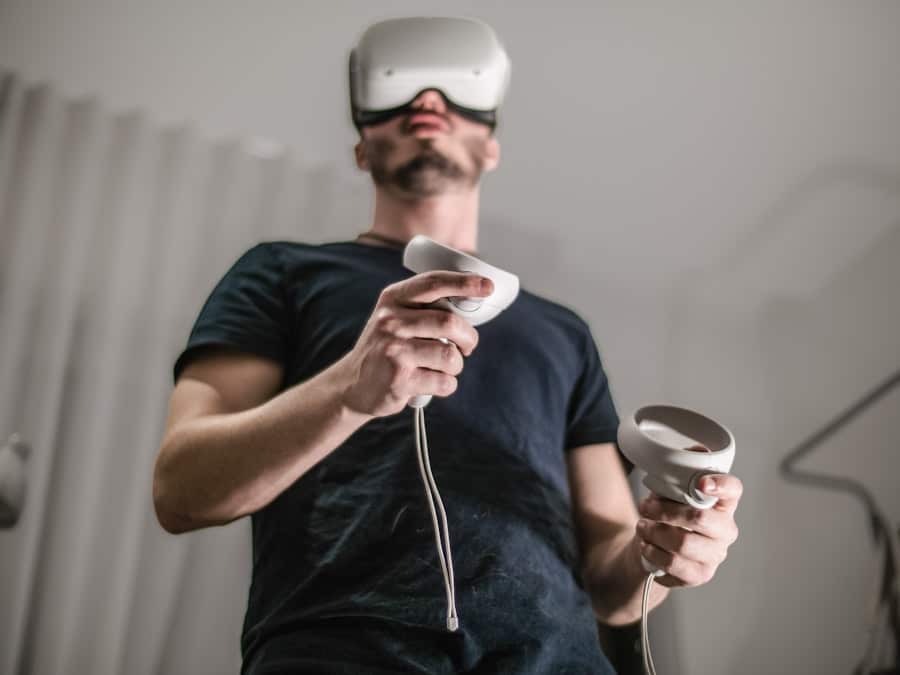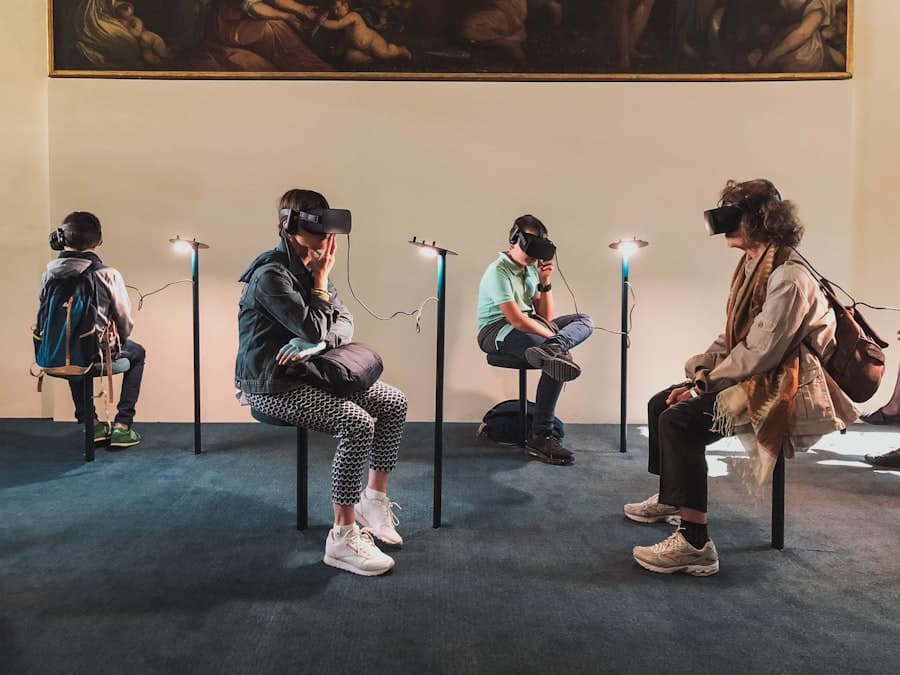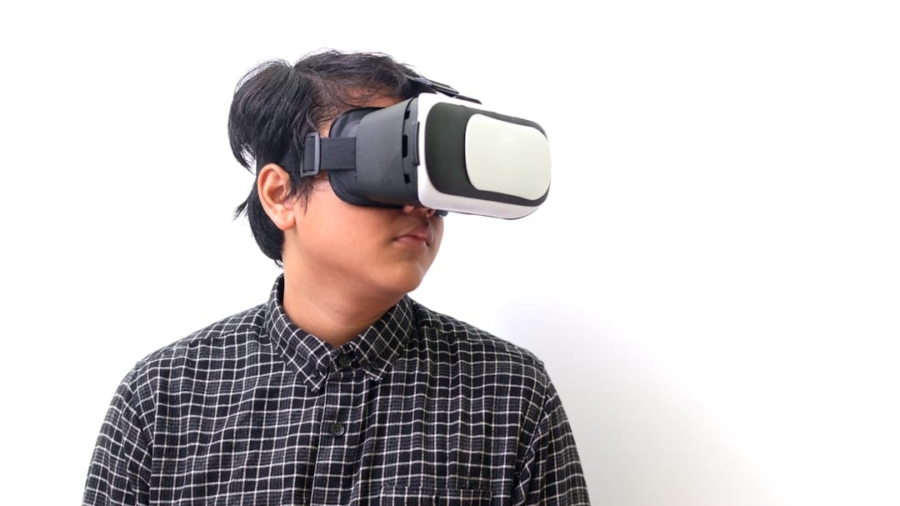The landscape of technology has undergone a seismic shift with the advent of virtual reality (VR), a medium that immerses users in digitally created environments. This transformative technology has given rise to a plethora of startups, each vying to carve out a niche in an increasingly competitive market. These startups are not merely tech companies; they are pioneers exploring the boundaries of human experience, creativity, and interaction.
From gaming to education, the applications of VR are vast and varied, making it an attractive field for entrepreneurs and investors alike. The surge in interest surrounding VR can be attributed to several factors, including advancements in hardware capabilities, the proliferation of affordable VR headsets, and a growing consumer appetite for immersive experiences. Startups are leveraging these trends to innovate and disrupt traditional industries.
For instance, companies like Oculus and HTC have set the stage for a new era of gaming, while others are exploring VR’s potential in fields such as healthcare, real estate, and social interaction. As these startups emerge, they are not only contributing to the technological landscape but also shaping the way we perceive and interact with digital content.
Key Takeaways
- Virtual reality startups are emerging in various business models including subscription-based, freemium, hardware sales and rentals, content creation and distribution, advertising and sponsorship, virtual reality arcades, and virtual reality training and education.
- Subscription-based business models offer virtual reality experiences on a recurring payment basis, providing a steady stream of revenue for startups.
- Freemium business models offer basic virtual reality experiences for free, with the option to upgrade to premium features for a fee, attracting a wide user base while monetizing premium content.
- Hardware sales and rentals allow virtual reality startups to generate revenue by selling or renting out virtual reality equipment and accessories to consumers and businesses.
- Content creation and distribution is a key focus for virtual reality startups, as they develop and distribute immersive experiences for entertainment, education, training, and more, attracting users and potential sponsors.
Subscription-based Business Models
One of the most prevalent business models adopted by VR startups is the subscription-based model. This approach allows users to access a library of VR content for a recurring fee, creating a steady revenue stream for companies. By offering a subscription service, startups can provide users with continuous access to new experiences, updates, and features without requiring them to make significant upfront investments.
This model is particularly appealing in the context of VR gaming, where players can explore a wide range of titles without the burden of purchasing each one individually. For example, platforms like Oculus Quest have introduced subscription services that grant users access to an extensive catalog of games and experiences. This not only enhances user engagement but also fosters a sense of community among subscribers who can share their experiences and recommendations.
Additionally, subscription models can help startups gather valuable data on user preferences and behaviors, enabling them to tailor their offerings more effectively. As competition intensifies, the ability to adapt and innovate within this model will be crucial for the long-term success of VR startups.
Freemium Business Models

Another popular approach among VR startups is the freemium business model, which offers basic content or services for free while charging for premium features or additional content. This model is particularly effective in attracting a large user base quickly, as it lowers the barrier to entry for potential customers. By allowing users to experience a product without any initial cost, startups can build a loyal following and convert free users into paying customers over time.
A notable example of this model in action is Rec Room, a social VR platform that allows users to create and share their own games and experiences. While the core platform is free to use, Rec Room generates revenue through in-app purchases for cosmetic items and premium features. This strategy not only incentivizes users to engage with the platform but also creates opportunities for monetization without alienating those who may be hesitant to spend money upfront.
The freemium model exemplifies how VR startups can balance accessibility with profitability, fostering a vibrant ecosystem of creators and consumers.
Hardware Sales and Rentals
While software and content are critical components of the VR ecosystem, hardware sales and rentals represent another significant revenue stream for startups in this space. The demand for high-quality VR headsets and accessories continues to grow as consumers seek immersive experiences that push the boundaries of technology. Startups that focus on hardware development can capitalize on this trend by offering innovative products that enhance user experiences.
Companies like Valve have made substantial investments in hardware development with their Index VR headset, which boasts advanced features such as high-resolution displays and precise motion tracking. By creating cutting-edge hardware, these startups not only generate revenue through direct sales but also establish themselves as leaders in the industry. Additionally, some startups are exploring rental models for VR equipment, allowing users to experience high-end hardware without the financial commitment of purchasing it outright.
This approach can be particularly appealing for events or short-term projects where access to advanced technology is required but not feasible for long-term ownership.
Content Creation and Distribution
At the heart of any successful VR startup lies compelling content that captivates users and keeps them coming back for more. Content creation encompasses a wide range of experiences, from immersive storytelling and gaming to educational simulations and virtual tourism. Startups that prioritize high-quality content development are better positioned to attract users and differentiate themselves from competitors.
The distribution of VR content is equally important, as it determines how easily users can access and engage with experiences. Platforms like SteamVR and the Oculus Store serve as vital distribution channels for VR content creators, providing them with a marketplace to showcase their work. Startups must navigate the complexities of content distribution while ensuring that their offerings reach the right audience.
Collaborations with established platforms or partnerships with other creators can enhance visibility and drive user engagement. Moreover, as the demand for diverse content grows, startups are increasingly exploring user-generated content models. By empowering users to create and share their own experiences within a platform, companies can foster community engagement while expanding their content library without incurring significant development costs.
This collaborative approach not only enriches the user experience but also encourages creativity and innovation within the VR space.
Advertising and Sponsorship

As virtual reality continues to gain traction, advertising and sponsorship opportunities within this medium are becoming more prevalent. Startups are exploring innovative ways to integrate brand messaging into immersive experiences without compromising user engagement. This approach requires a delicate balance; advertisements must feel organic within the virtual environment while still delivering value to brands seeking exposure.
One example of effective advertising in VR is the integration of branded experiences within games or simulations. For instance, a startup might partner with a popular game developer to create a branded virtual space where users can interact with products or services in an engaging manner. This not only enhances brand visibility but also provides users with unique experiences that resonate with their interests.
Additionally, sponsorship deals for events or competitions within VR platforms can create mutually beneficial relationships between startups and brands looking to reach tech-savvy audiences. However, as advertising becomes more prevalent in virtual reality, startups must remain mindful of user experience. Overly intrusive ads can detract from immersion and lead to negative perceptions of both the platform and the brands involved.
Striking the right balance between monetization and user satisfaction will be crucial for startups aiming to leverage advertising as a sustainable revenue stream.
Virtual Reality Arcades
The concept of virtual reality arcades has emerged as an exciting avenue for startups looking to introduce consumers to immersive experiences without requiring them to invest in expensive hardware at home. These arcades provide users with access to high-end VR equipment in a social setting, allowing them to explore various games and experiences while enjoying the company of friends or fellow enthusiasts. Startups operating VR arcades often curate a diverse selection of content that appeals to different demographics, from casual gamers seeking entertainment to serious enthusiasts looking for cutting-edge experiences.
By offering multiplayer options and group activities, these arcades create an environment conducive to social interaction, enhancing the overall appeal of virtual reality as a shared experience.
Startups can gather valuable feedback from users about their experiences, preferences, and suggestions for improvement.
This data-driven approach allows companies to refine their offerings while fostering community engagement around virtual reality.
Virtual Reality Training and Education
The application of virtual reality in training and education represents one of the most promising areas for startups in this space. By leveraging immersive technology, companies can create realistic simulations that enhance learning outcomes across various fields, including healthcare, aviation, manufacturing, and more. The ability to practice skills in a safe environment without real-world consequences is invaluable for both learners and educators.
For instance, medical training programs have begun incorporating VR simulations that allow students to practice surgical procedures or patient interactions in lifelike scenarios. Startups like Osso VR have developed platforms that enable medical professionals to hone their skills through interactive training modules that replicate real-life situations.
In addition to vocational training, virtual reality is being utilized in educational settings to create engaging learning experiences for students of all ages. Startups are developing educational content that transports learners to historical events or scientific phenomena, fostering curiosity and enhancing understanding through immersive storytelling. As educational institutions increasingly recognize the potential of VR technology, startups that focus on creating impactful training solutions will play a pivotal role in shaping the future of education.
The diverse applications of virtual reality across various sectors underscore its potential as a transformative technology. As startups continue to innovate within this space, they will undoubtedly contribute to reshaping industries while enhancing user experiences across multiple domains.
In the rapidly evolving landscape of technology startups, virtual reality (VR) companies are continuously exploring innovative business models to capture market share and drive growth. A related article that delves into the dynamics of startup innovation is

